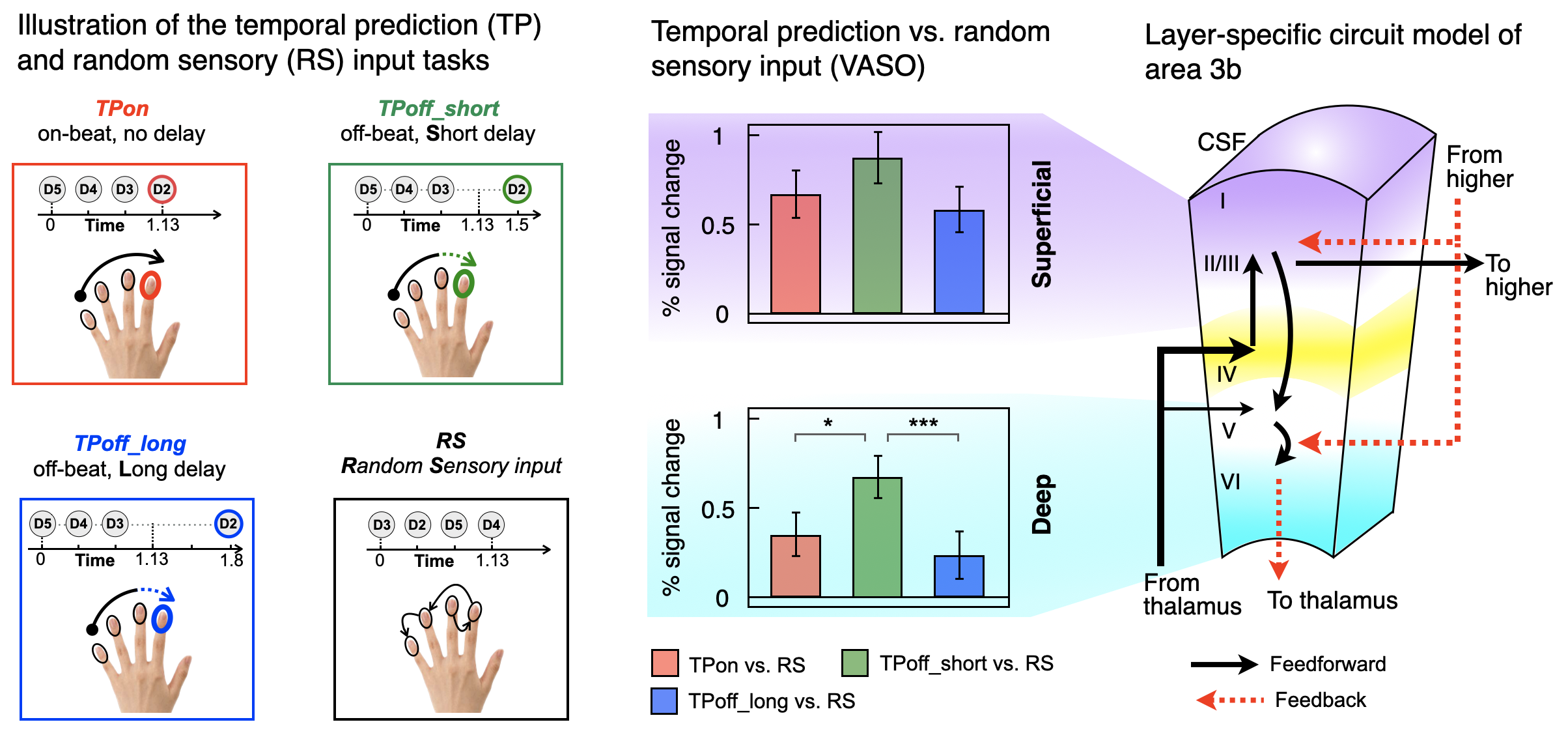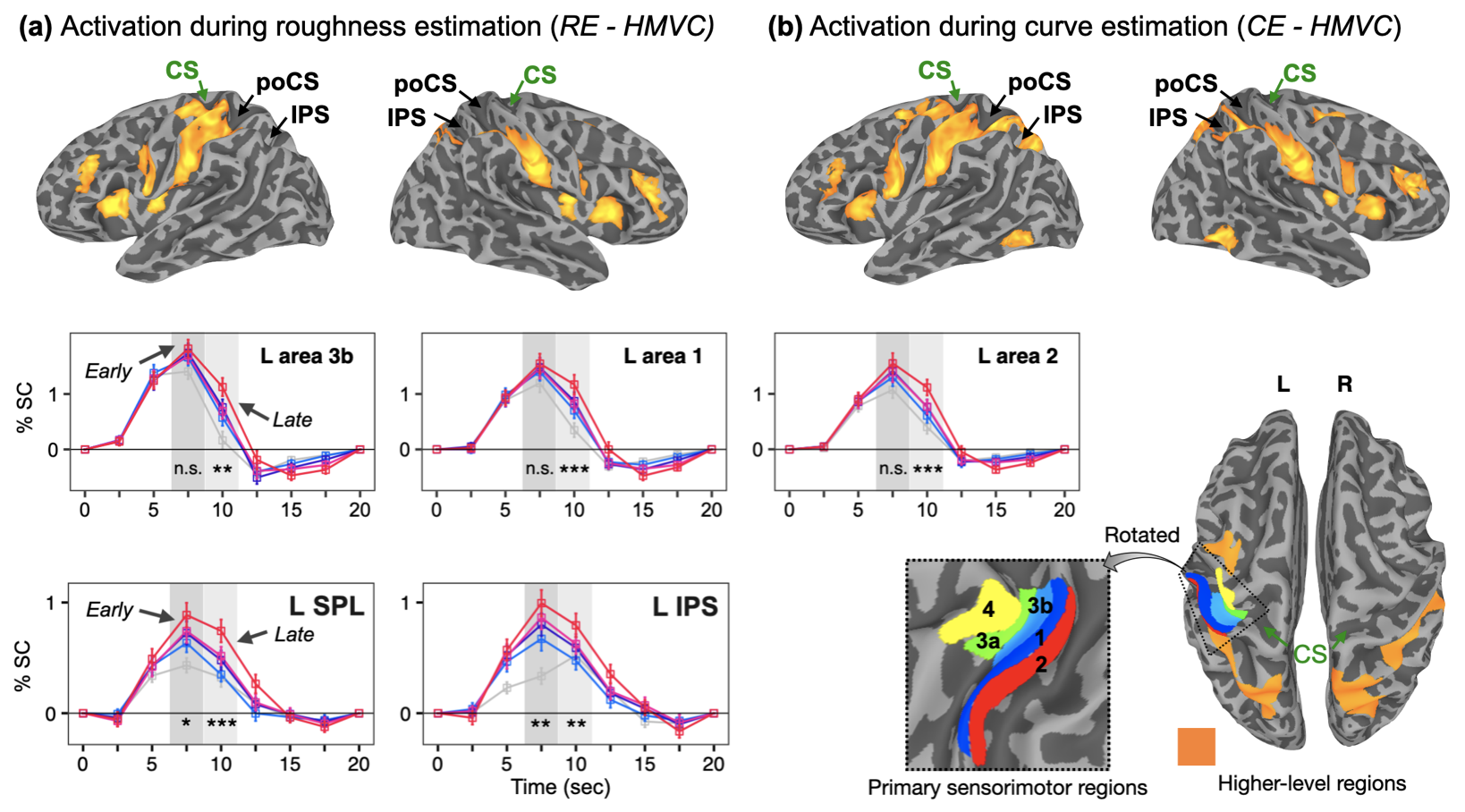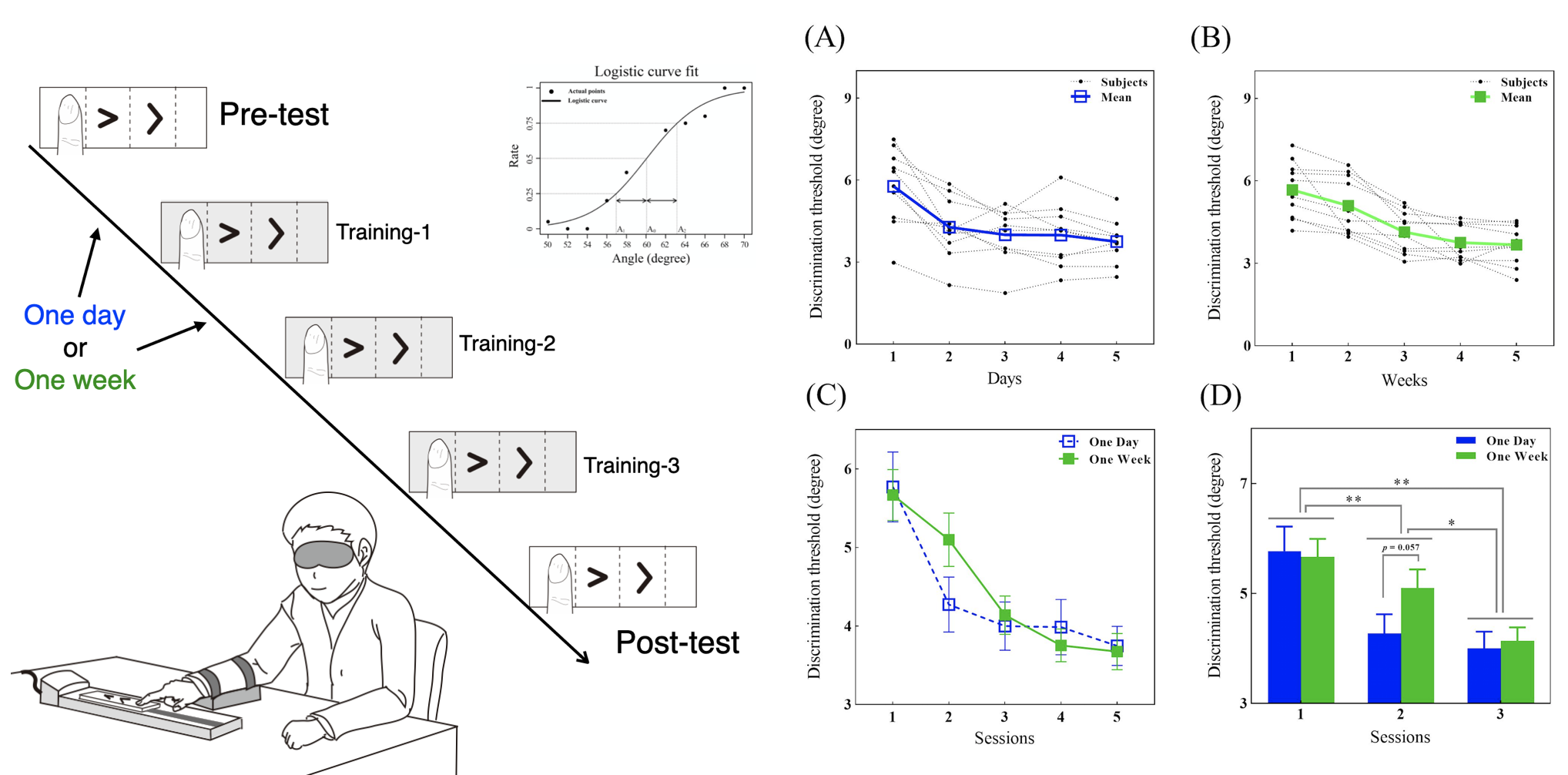Research topics
Linking cortical microcircuit models to human cognition
The human cerebral cortex contains billions of neurons that are organized into well-defined laminar structures, and the neurons in each layer have thousands of interlaminar and cortico–cortical synaptic connections with other neurons. Human development and learning processing are thought to shape both the laminar structural and functional organization of the cerebral cortex, something that is unique to human beings. Direct mapping of laminar-specific activity in the human brain is an exciting approach that promises to provide insight into human brain circuitry. Further, it will also open a new window in elucidating the basis of disabilities in severe mental disorders and neurodegenerative diseases. Currently, the ultra-high-field fMRI at 7 T is developing into a mature technology that has already had a major impact on neuroimaging. Our lab focus on improving the imaging quality of laminar fMRI and help in the understanding of human cognition from a laminar neuroimaging perspective.

Understanding haptic fine surface perception processing in the human brain
Humans are sensitive to surface microstructure. Recent research indicates that such fine surface features (smaller than 100μm) are encoded in highly repeatable, texture-specific temporal spiking patterns evoked as the skin moves across the surface. However, it is still unknown whether this temporal code is preserved in the human brain. Our lab focuses on understanding the haptic fine surface perception processing in the human brain.

Elucidation of the mechanism of stereopsis insufficiency and mental & physical fatigue
The purpose of this study is to investigate the fact that VDT (Visual Display Terminals) workers and young people without ophthalmologic diseases have difficulty with binocular stereopsis using behavioral and cognitive science methods, and to find a method of functional recovery.

Selected papers
Layer-specific activation of sensory input and predictive feedback in the human primary somatosensory cortex
When humans perceive a sensation, their brains integrate inputs from sensory receptors and process them based on their expectations. The mechanisms of this predictive coding in the human somatosensory system are not fully understood. We fill a basic gap in our understanding of the predictive processing of somatosensation by examining the layer-specific activity in sensory input and predictive feedback in the human primary somatosensory cortex (S1). We acquired sub-millimeter fMRI data at 7T during a task of (a) perceived, (b) predictable, and (c) unpredictable touching sequences. We demonstrate that the sensory input from thalamic projects preferentially activate the middle layer, while the superficial and deep layers in S1 are more engaged for cortico-cortical predictive feedback input. These findings are pivotal to understanding the mechanisms of tactile prediction processing in the human somatosensory cortex.
Yu et al. (2019) Science Advances 5,eaav9053

Layer-specific activation in human primary somatosensory cortex during tactile temporal prediction error processing
The human brain continuously generates predictions of incoming sensory input and calculates corresponding prediction errors from the perceived inputs to update internal predictions. In human primary somatosensory cortex (area 3b), different cortical layers are involved in receiving the sensory input and generation of error signals. It remains unknown, however, how the layers in the human area 3b contribute to the temporal prediction error processing. To investigate prediction error representation in the area 3b across layers, we acquired layer-specific fMRI data at 7T from human area 3b during a task of index finger poking with no-delay, short-delay and long-delay touching sequences. We demonstrate that all three tasks increased activity in both superficial and deep layers of area 3b compared to the random sensory input. The fMRI signal was differentially modulated solely in the deep layers rather than the superficial layers of area 3b by the delay time. Compared with the no-delay stimuli, activity was greater in the deep layers of area 3b during the short-delay stimuli but lower during the long-delay stimuli. This difference activity features in the superficial and deep layers suggest distinct functional contributions of area 3b layers to tactile temporal prediction error processing. The functional segregation in area 3b across layers may reflect that the excitatory and inhibitory interplay in the sensory cortex contributions to flexible communication between cortical layers or between cortical areas.
Yu et al. (2022) NeuroImage 248,118867

Different activation signatures in the primary sensorimotor and higher-level regions for haptic three-dimensional curved surface exploration
Haptic object perception begins with continuous exploratory contact, and the human brain needs to accumulate sensory information continuously over time. However, it is still unclear how the primary sensorimotor cortex (PSC) interacts with these higher-level regions during haptic exploration over time. This fMRI study investigates time-dependent haptic object processing by examining brain activity during haptic 3D curve and roughness estimations. For this experiment, we designed sixteen haptic stimuli (4 kinds of curves × 4 varieties of roughness) for the haptic curve and roughness estimation tasks. Twenty participants were asked to move their right index and middle fingers along the surface twice and to estimate one of the two features—roughness or curvature—depending on the task instruction. We found that the brain activity in several higher-level regions (e.g., the bilateral posterior parietal cortex) linearly increased as the number of curves increased during the haptic exploration phase. Surprisingly, we found that the contralateral PSC was parametrically modulated by the number of curves only during the late exploration phase but not during the early exploration phase. In contrast, we found no similar parametric modulation activity patterns during the haptic roughness estimation task in either the contralateral PSC or in higher-level regions. Thus, our findings suggest that haptic 3D object perception is processed across the cortical hierarchy, whereas the contralateral PSC interacts with other higher-level regions across time in a manner that is dependent upon the features of the object.
Yang et al. (2021) NeuroImage 231,117754

Event-related potential evidence for tactile orientation processing in the human brain
It is well known that information on stimulus orientation play an important role in sensory processing. However, the neural mechanisms underlying somatosensory orientation perception are poorly understood. Adaptation has been widely used as a tool to study examine sensitivity to specific feature of sensory stimulus. Using the adaptation paradigm, we measured event-related potentials (ERPs) in response to tactile orientation stimuli presented pseudo-randomly to the right-hand palm in trials with all the same or different orientations. Twenty subjects were asked to count the tactile orientation stimuli. The results showed that the early ERP component (N60) was abated at the 9th repetition, whilst this effect was absent in different orientation session. The subsequent N120 amplitudes showed strong adaptation with a steady amplitude decrease from the first repetition, but not different orientation session. Finally, P300 amplitude was also decreased from the first stimulation in the same and different orientation sessions. Based on these findings, we propose the possible program of tactile orientation processing in the brain, which may provide a new perspective for future research. These findings would help us to understanding the mechanisms of tactile orientation processing in the human brain.
Yang et al. (2024) Experimental Brain Research 242:809–817

Tactile angle discriminability improvement: contributions of working memory training and continuous attended sensory input
Perceptual learning is commonly assumed to enhance perception through continuous attended sensory input. However, learning is generalizable to performance in untrained stimuli and tasks. Although previous studies have observed a possible generalization effect across tasks as a result of working memory (WM) training, comparisons of the contributions of WM training and continuous attended sensory input to perceptual learning generalization are still rare. Therefore, we compared which factors contributed most to perceptual generalization and investigated which skills acquired during WM training led to tactile generalization across tasks. Here, a Braille-like dot pattern matching N-back WM task was used as the WM training task, with four workload levels (0, 1, 2, and 3-back levels). A tactile angle discrimination (TAD) task was used as a pre- and posttest to assess improvements in tactile perception. Between tests, four subject groups were randomly assigned to 4 different workload N-back tasks to consecutively complete three sessions of training. The results showed that tactile N-back WM training could enhance TAD performance, with the 3-back training group having the highest TAD threshold improvement rate. Furthermore, the rate of WM capacity improvement on the 3-back level across training sessions was correlated with the rate of TAD threshold improvement. These findings suggest that continuous attended sensory input and enhanced WM capacity can lead to improvements in TAD ability, and that greater improvements in WM capacity can predict greater improvements in TAD performance.
Wang et al. (2022) Journal of Neurophysiology 127(5),1398-1406

Development of a Piezoelectric Actuated Tactile Stimulation Device for Population Receptive Field Mapping in Human Somatosensory Cortex with fMRI
We designed a multichannel piezoelectric actuated tactile stimulation device consisting of an execution unit and a control unit to generate and deliver tactile stimulation that had 2.64 mm displacement with a frequency range of 1-30 Hz. Through an output performance test and MR compatibility test, our device design could play a part in finger pRF representation characteristics in the primary somatosensory cortex. Comparing the along-digits paradigm and cross-digits paradigm designs, the activation representation showed the same order in within-dimension and between-dimension analyses. The thumb (D1) expressed larger relative volumes in the cross-digits paradigm, and in both paradigms, the index finger (D2) expressed a larger receptive field that contributed to information integration.
Wu et al. (2022) Journal of Magnetic Resonance Imaging 56,1055–1065

